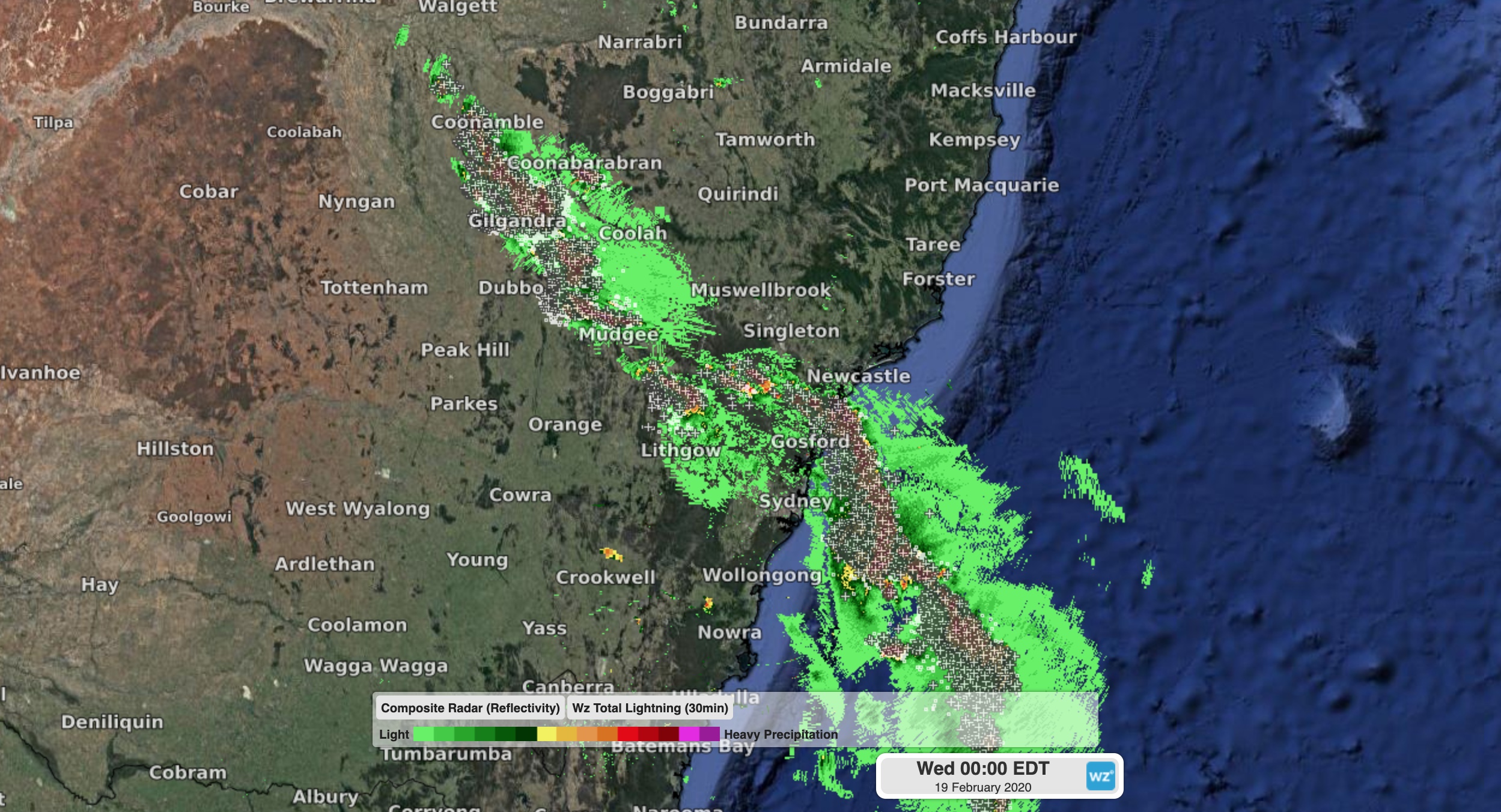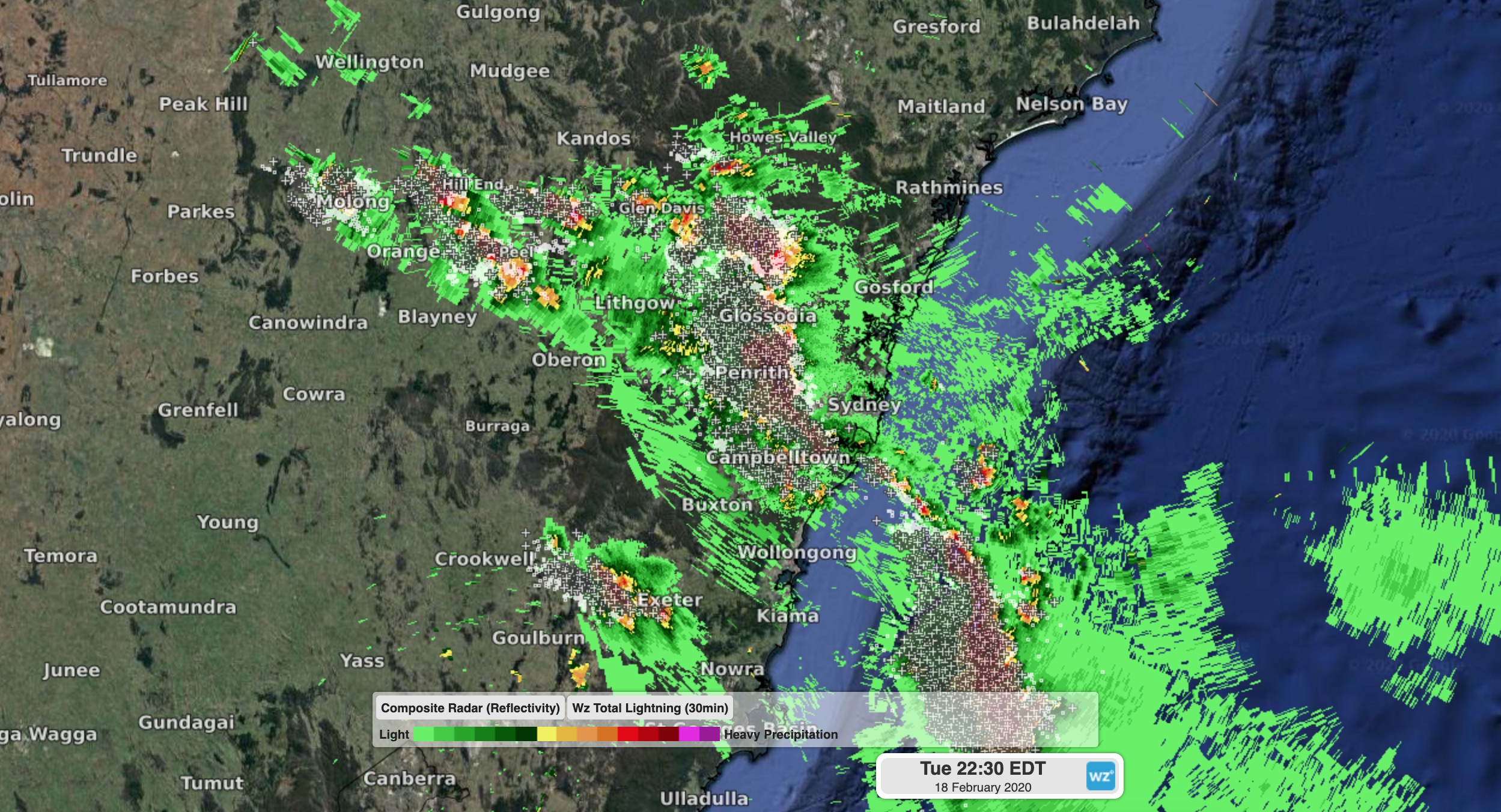Wild night of storms in NSW

Severe thunderstorms rumbled across NSW on Tuesday night, damaging properties and cutting power.
After a day of isolated thunderstorms activity on Tuesday, a more organised line of storms developed along a low pressure trough on Tuesday night.
The line of severe thunderstorms grew as it moved over NSW from west to east, prompting warnings across a large swathe of the state.

Image: A line of severe thunderstorms over NSW at midnight on Tuesday night.
Large to giant hail was reported around Mittagong and Wollongong as the storms moved over the Southern Highlands and Illawarra at around 8pm. By 9pm, Nowra had received 50mm of rain in one hour and clocked a wind gust of 91km/h.
Renwick (Mittagong) tonight ... pic.twitter.com/dWKdk3N9qt
— Essentially Josh (@EssentiallyJosh) February 18, 2020
As the storms moved further north and east, frequent lightning strikes lit up the night sky and some of the storms became more intense.

Image: Severe thunderstorms passing over Sydney and surrounding areas at 10:30pm on Tuesday.
There were roughly 62,700 lightning strikes detected within a 100km radius of Sydney between 9pm and midnight. These powerful storms caused wind gusts over 100km/h at North Head, Sydney Harbour and Richmond Airport between 10pm and 11pm, bringing down trees and cutting power in some areas. North Head's 111km/h was its strongest gust in 16 years.
A couple watch a powerful #storm hammer Sydney. Many power blackouts due to lightning. Image from Mona Vale @nampix for @smh pic.twitter.com/YPy3qB0YJa
— Nick Moir (@nampix) February 18, 2020
Further inland, there were reports of major property damage from destructive winds near Gilgandra shortly before midnight, while nearby Coonabarabran received 59mm of rain during the two hours to 2am.
By 7am on Wednesday, the most intense thunderstorms had moved offshore and were heading out into the Tasman Sea. However, severe thunderstorms are likely to develop over northeast NSW and parts of southeast Queensland later in the day.
Across NSW as a whole, there were more than 800,000 lightning strikes detected between Tuesday morning and Wednesday morning.